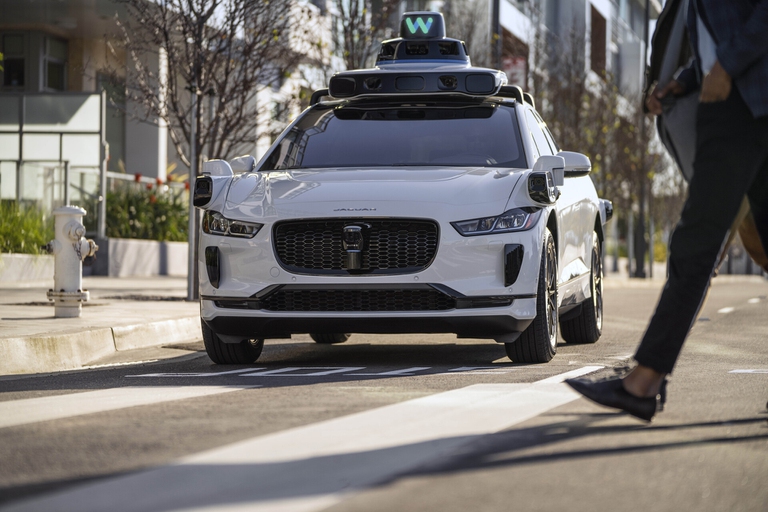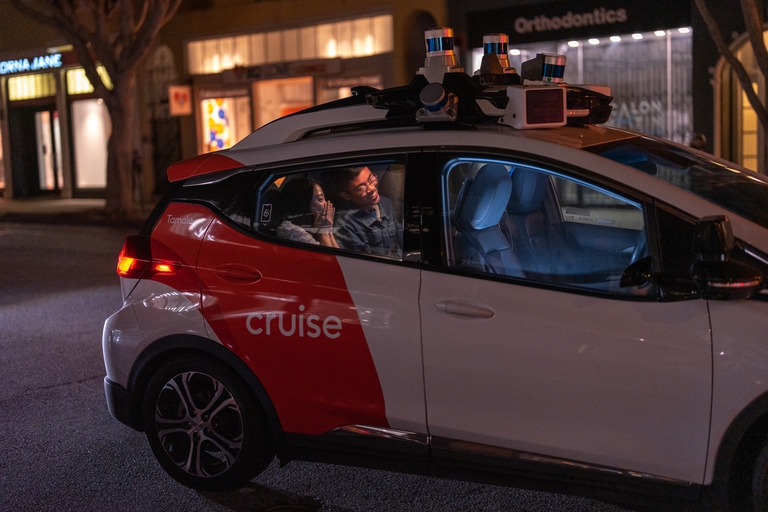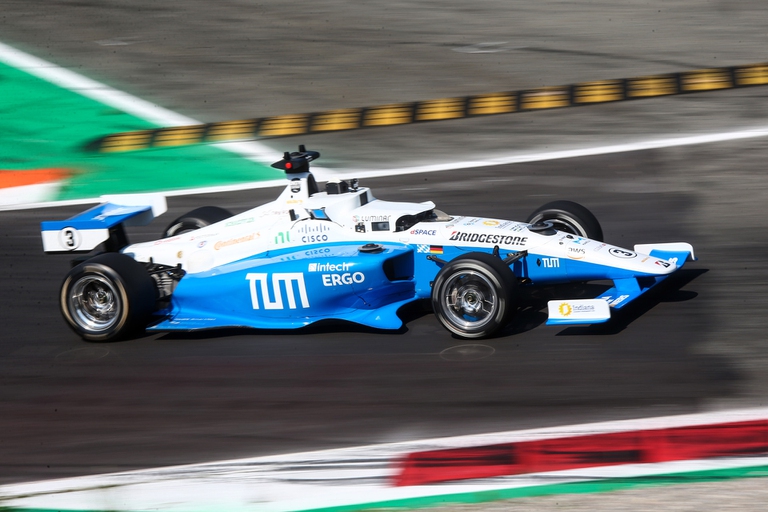https://www.lifegate.it/san-francisco-taxi-a-guida-autonoma
- |
- San Francisco is the first city in the world to launch a 24-hour public self-driving robotaxi service.
- The effects are amazement and curiosity.But also concern about chaos and traffic jams, as a video shows.
- However, according to experts, artificial intelligence applied to mobility has more benefits than limitations.
San Francisco, California.A few days after the American state's decision to authorize the circulation of robotaxi in the city, i.e. by car to autonomous driving and driverless vehicles intended for public passenger transport, the first effects are arriving, not all of them positive... But let's start from the beginning.On August 10, the California public utilities commission, the agency that regulates public services such as mobility, among other things, announced that it had authorized the companies Alphabet, Waymo And Cruise to transporting people on driverless robotaxis, 24 hours a day and throughout the city.
A decision welcomed positively by the automotive industry but which also aroused opposition from residents and associations, in addition to concerns about safety raised by bodies such as the police and fire brigade.To date they already are 500 the self-driving vehicles available in San Francisco, destined to increase (or decrease) depending on the results of the service.But how is the trial going almost a month after it started?After the initial enthusiasm, numerous are emerging criticality which, as shown in a report by NBC News, could lead the city to remodel the service.
The role of autonomous driving and doubts about safety
“Although we do not yet have definitive data to judge how self-driving cars perform compared to human drivers, I believe in the potential of this technology to increase safety on the roads,” John Reynolds, a head of the California Public Utilities Commission, told the press , responding to the concerns expressed by some citizens about the safety offered by robotaxis.In fact, San Francisco thus becomes the largest test laboratory for self-driving cars, an important step towards testing the potential of the system in a real urban environment.artificial intelligence applied to mobility.

Speed and weather conditions are the only limitations
However, the rules are not the same for all robotaxi service providers.Waymo, for example, is allowed to travel at speeds of up to 65 miles per hour (about 100 km/h) and in adverse weather conditions, while Cruise must limit the speed of its autonomous taxis to 35 miles per hour (less than 60 km/h) and is not authorized to provide the service when weather conditions do not allow it.In short, the race for driverless cars has begun in San Francisco and the number of companies that have applied to the commission for permission to expand the innovative service is growing, including Uber and Lyft.

Empty seats and steering wheels that turn on their own go viral on social media
The robotaxis, filmed in numerous videos on social media while carrying amused (but also worried) passengers, have gone viral, complete with close-ups of empty driver's seats and steering wheels that turn on their own. There are also many questions, and the doubts expressed in these first days by citizens, concerned about many aspects related to accessibility for disabled, moving from safety to the union problems raised by taxi driver associations.On the other hand, the problem of safety had already been known for some time:according to a report from the San Francisco municipal transportation agency, only since the spring of 2022 (when the experimentation on robotaxis had already started) there have been almost 600 accidents which involved autonomous vehicles in various capacities.Yet, projects like those in San Francisco are fundamental for the development of self-driving cars, a reality destined to revolutionize the mobility of the future.

The opinion of Paul Mitchell, president of the Indy autonomous challenge
The San Francisco case has reignited the debate on self-driving cars.So to make a point we asked a few questions Paul Mitchell, president of the Indy autonomous challenge, an international project in which students and researchers from the most important universities and research centers in the world participate (for Italy the Polytechnic of Milan and the University of Modena and Reggio Emilia), which sees race cars driven by artificial intelligence compete on the track.Let's see what he told us.
After years of skepticism and some setbacks, the San Francisco experimentation has reopened new scenarios on autonomous cars. When will we likely see its real diffusion?
Autonomous cars are already here, and here to stay!We already have them on US roads, including services like the autonomous shuttle May Mobility operating in some Indiana cities, such as Indianapolis and Fishers.There are several companies, some involved in various active trials, such as Waymo, Cruise, Uber and others, that already offer robotaxi services, and a dozen companies that are testing autonomous truck systems on American highways.Plus, most new cars currently on sale already deliver driver assistance systems, in fact autonomous driving systems which, thanks to sensors, radar and cameras, greatly increase safety, contributing to the reduction of road accidents.
How will autonomous driving be integrated in different countries around the world?
What many people may not know is that some important safety elements now common on our cars, rear-view mirrors, seat belts, tires and braking systems, in the USA were developed thanks to experience on the track in professional racing.The Indy autonomous challenge is the demonstration of how competitions can accelerate innovation, with positive repercussions on the automotive industry.The pace of integration of autonomous vehicles across countries will depend greatly on the support provided by individual governments and the regulation of the technologies.Companies providing the technologies necessary for the development of autonomous driving and car manufacturers are currently focused on markets such as the United States, China and Western Europe.But over time, self-driving vehicles are set to spread globally quite quickly, especially if data shows that their adoption can save lives and create new economic frontiers.
What is the role of artificial intelligence in the cars of the future?
Universities in Indiana, Italy and around the world are creating teams of experts to develop theartificial intelligence, machine learning and all those technologies and innovations that we can exploit to improve road safety and reduce human error.But artificial intelligence is a broad term;much of the attention of governments and public opinion focuses on its ability to replicate human emotions or knowledge.But the reality is that AI, artificial intelligence, can be applied to many areas and among these mobility is one of the most suitable, because it involves the processing of a large number of variables, with the need to make decisions rational, coherent and safe.And making decisions is something that AI does very well;think that in the context of the track experiments carried out thanks to the Indy autonomous challenge project, the cars driven by artificial intelligence have increased their performance in less than a year, going from an initial speed on the track of 60 km/h to the current speed of over 300.I conclude by underlining that projects like the one in Indiana do not seek to replace human drivers in competitions.Rather, they aim to improve the ability of artificial intelligence to reduce human errors while driving, today the main cause of road accidents.
